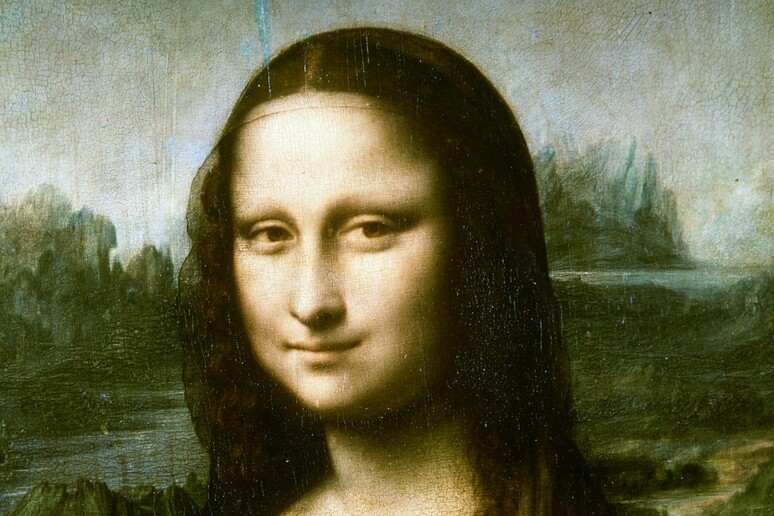The Mona Lisa had thyroid
problems that account for her yellow skin, thinning hair and a
possible goitre on her neck, two US researchers say.
In a paper published in the September 2018 issue of the Mayo
Clinic Proceedings, Brigham and Women's Hospital researcher
Mandeep Mehra and University of California, Santa Barbara's
Hilary Campbell said that clinical hypothyroidism is a more
likely diagnosis than previous hypotheses including a lipid
disorder and heart disease.
"The enigma of the Mona Lisa can be resolved by a simple
medical diagnosis of a hypothyroidism-related illness," Dr.
Mehra said.
"In many ways, it is the allure of the imperfections of
disease that give this masterpiece its mysterious reality and
charm."
Had Leonardo da Vinci's enigmatic sitter Lisa Gherardini
suffered from heart disease and a lipid disorder, it's unlikely
she would have lived to such an advanced age given the limited
treatments available in 16th century Italy.
Dr. Mehra cited the Mona Lisa's thinning hair, yellow skin,
and possible goitre as visual evidence of hypothyroidism.
"The diet of Italians during the Renaissance was lacking in
iodine, and resulting goiters (swollen thyroid gland) were
commonly depicted in paintings and sculptures of the era," he
said.
"Additionally, Lisa Gherardini gave birth shortly before
sitting for the portrait, which indicates the possibility of
peripartum thyroiditis (inflammation of the thyroid after
pregnancy)."
The Mona Lisa's appearance has spurred a cottage industry of
medical suggestions over the years.
A Spanish neuroscientist recently claimed the secret of her
"vanishing" smile is in the messages sent to the brain
by the beholder's eyes.
"Sometimes one channel wins over the other, and you see
the smile, sometimes others take over and you don't see the
smile," Alicante-based neuroscientist and art lover Luis
Martinez Otero said in British science journal New Scientist.
Otero asked volunteers to look at different-sized
versions of the portrait from varying distances and in varying
light.
Closer or better-lit viewing brought the smile to life
while dimmer and distant conditions made it fade.
Using new computer software, Otero and his assistant
Diego Alonso Pablos also gauged different observation
positions.
Dead-centre vision appeared to produce a fuller and
smugger smile while peripheral views made Mona Lisa seem sad,
they said.
The reason, they concluded, is that different cells in
the retina transmit different categories of information.
These channels, Otero and Pablos say, encode data in
different ways, leading to the apparent 'shape-shifting' on
the lips of the woman captured by Leonardo in 1503-06.
The Spanish study isn't the first to argue that viewing
conditions determine how the smile appears.
In 2000 a Harvard neuroscientist said the smile was
easier to see from the side while in 2005 another US team
said random noise could interfere with its appearance.
Other theories are based on speculation about the woman
recently identified as the wife of Florence merchant
Francesco Del Giocondo (giving her Italian name 'La Gioconda').
She was pregnant, or had recently given birth, some say,
or perhaps she had just lost a loved one.
Others have argued the painting is a self-portrait of
the artist, or one of his favourite male lovers in disguise,
citing the fact that Da Vinci kept the painting with him
until his death at Amboise, France in 1519.
The most curious theories have been provided by medical
experts-cum-art lovers.
One group of medical researchers has maintained that the
sitter's mouth is so firmly shut because she was undergoing
mercury treatment for syphilis which turned her teeth black.
An American dentist has claimed that the tight-lipped
expression was typical of people who have lost their front
teeth, while a Danish doctor was convinced she suffered from
congenital palsy which affected the left side of her face.
A French surgeon has also put forth his view that she
was semi-paralysed, perhaps as the result of a stroke.
American feminist writer Camille Paglia simply concluded that
the cool, appraising smile showed that "what Mona Lisa is
ultimately saying is that males are unnecessary".
ALL RIGHTS RESERVED © Copyright ANSA











